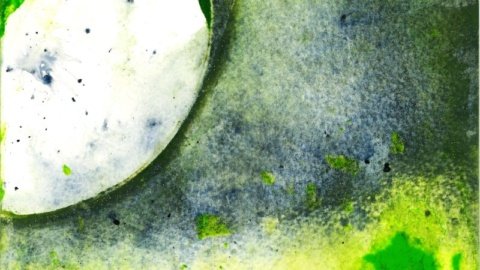Ahead of Jantsankhorol Erdenebayar’s debut at Art Basel Hong Kong, he and his mother and fellow artist, Mugi, share how their artworks are visual metaphors that draw from the country’s nomadic and diverse heritage
The Mongolian death worm, also known as the Olgoi-Khorkhoi or the “large intestine worm”, is prevalent in Mongolian folklore. Hiding mostly in the desert, the creature is said to surreptitiously navigate the land beneath the sand dunes. It releases a lethal poison that instantly kills anyone who dares to touch it. Even now, many people believe it dwells in the Gobi Desert.
The cryptid recurs in Mongolian artist Jantsankhorol Erdenebayar’s sculptures, its elusive nature serving as a metaphor for ideas that are abstract and intangible but are given form through belief. The artist draws from local folktales and mythology, his interest stemming from the fact “that even if people know [myths and legends] aren’t true, they choose to believe and follow the narratives of these scenarios. I’m interested in how stories survive.”
The stories are passed down from generation to generation. Jantsankhorol explores this form of survival by incorporating elements from the tales into his work, referencing creatures, characters or plots. He crafts sculptures out of found natural objects such as goat horns or discarded wood. These materials at once reference both the local landscape and nomadic culture, as well as the current context of the nation facing mass consumption and resource scarcity, issues that come with becoming part of a globalised economy.
Mongolia is home to many nomadic cultures which emphasise the importance of passing down customs via oral traditions. But from 1920 to 1990, while the country was under a communist regime, many customs from the reign of the Mongolian Empire as well as Buddhist traditions and teachings were forbidden, creating a cultural gap in Mongolian history. It was only after the democratic revolution in the 1990s that the idea of “Mongolian identity” was forged. Jantsankhorol’s sculptures serve as visual metaphors for the nation’s current cultural climate, in which this identity is still in flux and being shaped.
Read more: Here’s why Mongolia is the perfect destination for introverts
His works will be on view at Art Basel Hong Kong, where Middle Child, a solo booth presentation with Flowers Gallery, highlighting his assemblage-like sculptures that hint at medieval relics, with their raw, rustic aesthetic. The structure of one of the works, a cast-bronze piece called Vigousse (2016), was inspired by the death worm. The artist replaced the worm’s head with a plaster cast of an ear he found at the Mongolian Academy of Fine Arts, where he taught from 2015-17 and 2022-23. In another sculpture, the Distance of Deepness (2015), the artist crafted a mythical creature, inspired again by the worm, out of layers of cardboard and ox horns.
It is unsurprising that Jantsankhorol decided to choose a career in art and that his work alludes to traditional folklore. He grew up hearing these stories, and both his mother Munkhtsetseg Jalkhaajav (also known as Mugi) and father Erdenebayar Monkhor are well-known artists. Jantsankhorol and his mother speak to Tatler from their large studio in Ulaan Baatar, which all three currently share. Jantsankhorol says elements of each other’s ideas are subconsciously absorbed through osmosis, while generational differences make for different experiences that inform their distinctive practices.
For instance, Mugi grew up during the socialist regime, at a time when “getting to know your own tradition was forbidden”, she says, adding that “if someone was injured, traditional therapists were hidden and would go help cure people without letting others know”. She recounts how, when her parents went to work, she would stay with her grandmother, who told her folktales. “Religious, Buddhist topics in particular were not allowed to be spoken about. When she [my grandmother] told these stories, I felt like they were coming through a secret channel, which made them all the more appealing.”

